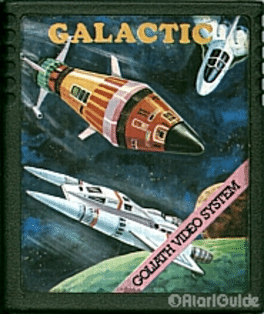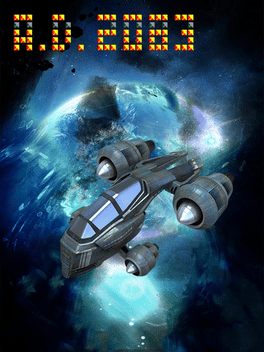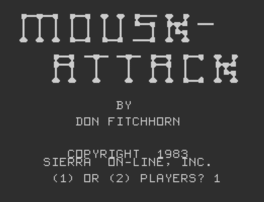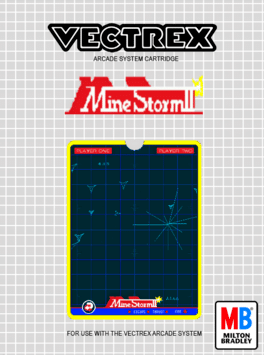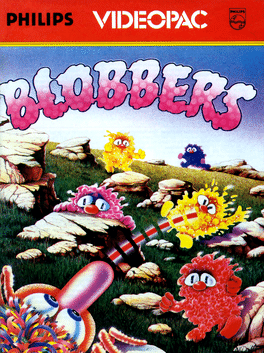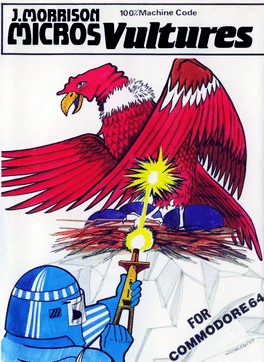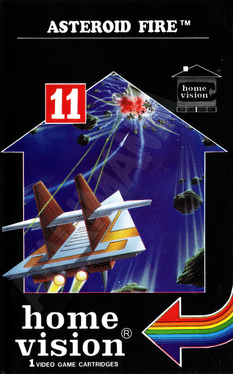New Shooter Games - Page 421
-
Coke Wins
1983
Coke Wins
1983
Pepsi Invaders (also known as Coke Wins) is a video game for the Atari 2600 platform, based on the popular Space Invaders. It was commissioned by Coca-Cola for their 1983 sales convention, and developed by Atari as a modification of the original Space Invaders cartridge. The game is a modification of Space Invaders, with each row consisting of the letters P E P S I followed by an alien, instead of the original six aliens.[ -
Galactic
1983
Galactic
1983
Similar to Pheonix or Galaxian. Shoot the birds or ufo's and don't get shot back. With three skill levels it's a challenging and enjoyable game. Pal Only. -
Wall-Defender
1983
Wall-Defender
1983
The mission - you are defending the wall from attacking aliens. Don't let them hit as they make the wall weaker. This sounds simplistic and is, but highly addictive as you score points for every alien destroyed. If a segment of the outer wall is destroyed (by the aliens kamikaze into it) if this happens enough times the outer wall flashes and you need to move in a level, post haste. If you don't, you drift off to space and all is lost. Don't fret though you have a chance to regain lost wall space by simply staying alive. If you stay alive long enough with no more incidents, you can regain that which has been lost...precious wall. -
A.D. 2083
1983
-
Space Bandits
1983
Space Bandits
1983
Space Bandits is quite possibly the most unique game out of all the MBX titles. You take control of a robot who must collect Earth's Energy Crystals that were stolen by "Computer Controlled Androids". The uniqueness of the game comes from the fact that not only can you walk up and down the corridors on the bottom of the screen, but also on the sides and top of the screen. Therefore, the game has a 3D aspect to it which makes your mission much harder to complete, especially considering that the controls change accordingly with the different sides of the screen (if you are controlling your robot on the bottom part of the screen all that is needed to move forward is a press "up" on the joystick. However, once on the top of the screen, a press "down" on the joystick moves you forward). This change of joystick movement helps create a more realistic feel that really helps the game out and makes it more fun to play, however frustrating it may be first. After you have the controls for the game down, which can prove to be v -
Mouse Attack
1983
Mouse Attack
1983
Mouse Attack is a Pac-Man type game where you are the mouse and must navigate through the map to escape the 4 cats on the screen. The path of your character, the mouse, is displayed after each section is crossed. Once the entire map is traced out on the map, the level will end and a new map will start. Mouse Attack! -
Mine Storm II
1983
Mine Storm II
1983
Tread lightly! The transport lanes of intergalactic space have been seeded with mines from an alien vessel. Use your mine destroying blaster to blow up the mines before they annihilate you! You may survive the floating mines, but beware of the fireball, magnetic, and treacherous fireball-magnetic mines . . . 13 fields, each one more difficult, await you! -
Narrow Escape
1983
Narrow Escape
1983
The goal in Narrow Escape is to successfully navigate a ship through the narrow, fast-moving passages of the warlord's fortress, destroy the defense forces and avoid space debris. The player's ship must also be maneuvered through small holes in a series of walls where fuel cells can be picked up to restore the ship's constantly decreasing fuel supply. If the player pilots their ship successfully, they will be faced with the warlord's own escape ship which must be hit several times to be destroyed, liberating the star system from the warlord's tyranny. Each level becomes more difficult as everything will move faster, fuel will be consumed more quickly, the holes in the walls will become smaller, and more menacing defense forces will appear. Each level of game play consists of two phases: 1. Passages: During the first phase of each level, the player must maneuver their ship through the narrow, moving passages with the joystick while shooting six of the warlord's defense forces with button 4. If any of the si -
Blobbers
1983
-
Cosmiads
1983
-
Metagalactic Llamas Battle at the Edge of Time
1983
Take control of Metallama and fight off the Zzyaxian cyborg, arachnid mutants in this side-scrolling shooter from the mind of Jeff Minter. -
Vultures
1983
Vultures
1983
Vultures is an original (?) shoot'em'up with a slight Galaga flavour. Above your spaceship hangs a nest of space-vultures. One after one, they come down to shoot at you. Unlike Galaga, they don't wrap at the end of the screen, instead they "bounce" back and forth across it. Mind the vulture's course, because otherwise you might find yourself trapped in a corner with the inevitable collision as only way out. A good tactic to ameliorate your chances is to dodge the vulture's bullets and concentrate your fire on its mates that are left hanging above. When all the vultures are killed, their eggs start to hatch and spawn similarly devious creatures. Shoot them down, and you have passed the first level. Vultures has three speed settings and runs in medium resolution with a green background. -
Asteroid Fire
1983
-
Gamma-Attack
1983
Gamma-Attack
1983
You are the commander of the only GAMMA ship in this stellar field. The Vegan war fleet has taken control of your GAMMA outpost planet and is defending it with Vegan laser pulse tanks. This planet is the only inhabitable planet in this star system, and you must stay there and fight the Vegans as long as you can. -
3D Ghost Attack!
1983
3D Ghost Attack!
1983
Originally planned as a pack-in cassette title for Amiga's never released Power Module peripheral, and later as one of three 3-D games on the first Power Play Arcade cart. 3 different prototypes exist, each being a different level of the game. Unfortunately, none of the prototypes are 100% complete, but two are playable. The game uses the traditional red/blue anaglyph glasses. -
Exocet
1983
Exocet
1983
In Exocet, you first pilot a spacecraft over the surface, shooting the defense towers in your path. The larger towers are too large to fly around, and they must be hit at the point where they fire. When you have traveled a particular distance, you will find an opening to the underground passage. There you continue to destroy the various things flying around. Also sold under the name "Cruise Missile" by Froggo Games. -
Time Warp
1983
Time Warp
1983
This game has you placed in a spacecraft of some kind (the cover art makes it look like a futuristic passenger jetliner with weapons attached, but I don't know honestly!) flying through what looks like a cave, while taking on several enemies that attack you from the right side of the screen. After surviving a few rounds, you'll go into an 'underground' cave where you fly through a treacherous corridor and attempt to dock with a refueling station (I'd guess.) After that, it's back to blasting targets again. Lather, rinse, repeat. -
UFO Patrol
1983
UFO Patrol
1983
It is a horizontal scrolling Shoot em´ up game. You try to avoid the UFOs while also trying to shoot them. -
Mission 3000 A.D.
1983
Mission 3000 A.D.
1983
Good Rip-off of the Atari 2600 game "Asteroids". You are flying in space, trying to dodge or shoot asteroids and escape from the enemy. -
Catch Time
1983
Catch Time
1983
You are having dinner when a horde of animals (mostly) insects arrive and want to steal your food. Your only weapon is insecticide liquid which you can spray in two directions (up and down). This game is a rip-off of Atari 2600 game "Plaque Attack" where you are defending your teeth against food with toothpaste.

